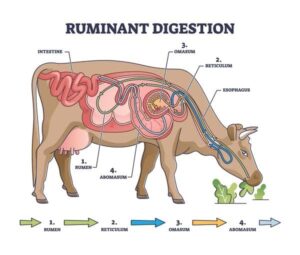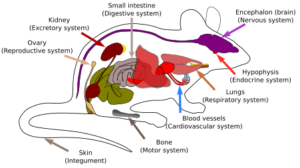Back to: ZOOLOGY 300 Level
WELCOME TO CLASS!
It’s so good to have you here again! You’re showing great commitment, and trust me, the more you learn about how animals survive and function, the more fascinating Zoology becomes. Today, we’re looking at something incredibly important—internal systems and adaptations in animals.
Have you ever wondered how a lion’s muscles help it chase down an antelope? Or how fish can breathe underwater? Or why birds can fly thousands of kilometres during migration? All of these are possible because of specially adapted internal systems that help each animal survive in its environment.
Internal Systems And Adaptations
Let’s take a close look at these systems and how they’ve been modified over millions of years to support different lifestyles.
Circulatory System
This system is like the transport network of the body. It moves blood, oxygen, nutrients, and waste around the body.

- Fish: Have a single circulatory system—blood passes through the heart once in each full circuit of the body. Their heart has two chambers: one atrium and one ventricle.
- Amphibians: Show a double circulation, but with some mixing of oxygenated and deoxygenated blood because they have a three-chambered heart.
- Mammals and birds: Possess a four-chambered heart for complete separation of oxygen-rich and oxygen-poor blood. This allows for high metabolic rates.
This means an animal like the cheetah can sprint at amazing speeds because its circulatory system supports high oxygen delivery to muscles.
Respiratory System
This system enables animals to exchange gases—taking in oxygen and removing carbon dioxide.
- Fish: Use gills to extract oxygen from water. Gills are made of thin filaments with large surface areas and a rich supply of blood vessels.
- Amphibians: Can breathe through their skin, lungs, and gills (in some stages).
- Birds: Have a unique system of air sacs that allows for continuous airflow—oxygen passes through lungs in one direction, making their respiration very efficient, especially for flight.
- Mammals: Use lungs with branching airways (bronchi and alveoli) where gas exchange takes place.
Think of how we pant when we run—birds, instead of panting, use their air sacs to push fresh air through their lungs even when they’re exhaling!
Digestive System
This system is how animals get energy and nutrients from food.

- Herbivores like cows have longer, more complex digestive tracts for breaking down cellulose in plants.
- Carnivores like lions have shorter intestines since meat is easier to digest.
- Birds have specialised structures like the crop (for storage) and gizzard (for grinding food), especially in seed-eating species.
In Nigeria, you’ll see chickens eating stones—not because they’re confused, but because the stones help grind food in their gizzards!
Excretory System
This system removes waste products from the body and regulates water and salt balance.
- Fish in freshwater excrete lots of diluted urine because water constantly enters their bodies through osmosis.
- Marine fish lose water to their salty environment and must drink seawater, excreting the excess salt through their gills and producing very concentrated urine.
- Birds and reptiles excrete uric acid (white paste you see in bird droppings), which saves water—perfect for dry environments like parts of northern Nigeria.
Nervous and Endocrine Systems
These systems help animals sense, respond, and control their internal functions.
- The brain processes information, while nerves carry messages to and from the body.
- Hormones control growth, metabolism, and reproduction.
- Highly active animals like eagles or antelopes have quick reflexes and sharp vision, supported by complex nervous systems.
Adaptations of Internal Systems
Animals adapt their systems based on their environments and lifestyles. Some examples include:

- Camel kidneys produce highly concentrated urine to prevent water loss in the desert.
- Frogs can breathe through their skin in water, thanks to thin skin rich in capillaries.
- Whales store more oxygen in muscles and blood for long dives.
- Snakes can unhinge their jaws and expand their digestive system to swallow large prey whole.
Summary
- Internal systems like circulatory, respiratory, digestive, excretory, and nervous systems work together to support survival.
- Each group of animals has adaptations suited to its environment—fish use gills, birds use air sacs, camels conserve water, and so on.
- These internal systems evolve over time, shaping how animals eat, breathe, move, and respond to challenges in their habitats.
Evaluation
- What is the difference between the circulatory system of a fish and a mammal?
- How do birds achieve efficient gas exchange?
- Why do marine fish produce concentrated urine?
- Give one example of an internal system adaptation in reptiles.
- How does the digestive system differ between herbivores and carnivores?
You’ve just explored the brilliant designs that allow animals to live, grow, and thrive in the most diverse environments. Keep up the energy and curiosity—we’re just getting started with all the amazing things nature has to teach us.
